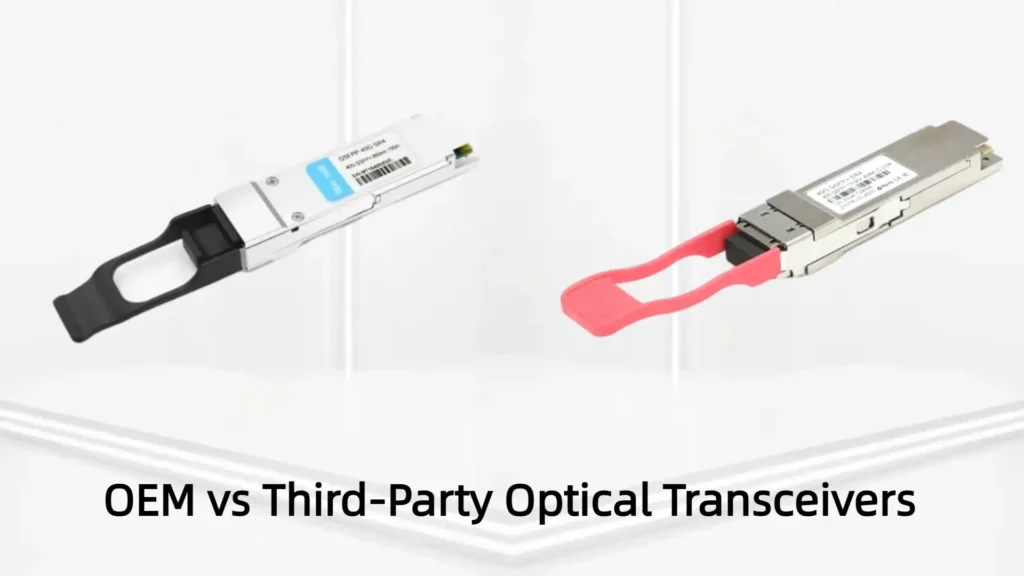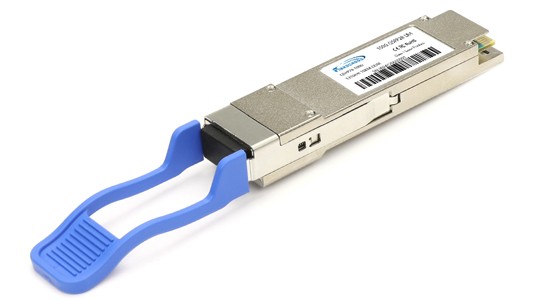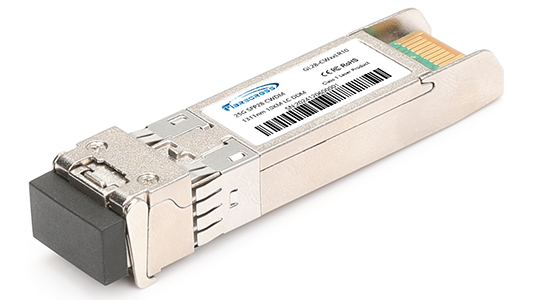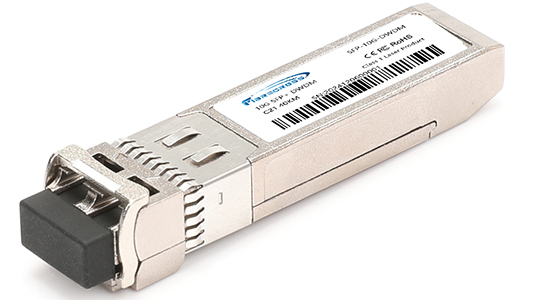OEM vs. Third-Party Optical Transceivers: Which to Choose?
This article helps enterprise IT managers evaluate whether to deploy OEM-branded or third-party optical transceivers in their networks. It highlights the practical trade-offs — compatibility, reliability, performance, warranty, vendor support, and total cost of ownership — so you can choose the right fiber optic transceivers for each part of your infrastructure.
Enterprise networks rely on optical transceivers (also called fiber optic transceivers or optical transceiver modules) to connect switches and routers via fiber cables. These pluggable modules (SFP, QSFP, etc.) convert electrical signals into light.
All modern transceivers follow industry Multi-Source Agreement (MSA) standards, so their form, fit, and function are essentially identical across vendors. In other words, an OEM-branded module and a compatible third-party module typically use the same hardware design – they just carry different labels. As a result, the practical differences are usually branding, price, and warranty, rather than technology.
Defining OEM vs. Third-Party Transceivers
OEM (Original Equipment Manufacturer): Produced or branded by the switch/router vendor (Cisco, Juniper, Arista, etc.).
Third-Party (Compatible): Made by independent suppliers to the same specifications.
Both types comply with standard SFP/QSFP MSA specifications, meaning they deliver equivalent performance. In fact, OEMs often source optics from the same factories as third-party vendors.
Compatibility and Quality
Because transceivers are standardized, compatibility is generally straightforward – but some OEMs use coding or firmware locks.
Compatibility at a glance:
| Aspect | OEM Transceivers | Third-Party Transceivers |
|---|---|---|
| Firmware/EEPROM codes | Always recognized | Sometimes blocked, but can be pre-coded |
| Plug-and-play | Guaranteed | High if vendor programs modules correctly |
| Risk of rejection | None | Possible on strict platforms (e.g., Cisco, HP) |
| Testing/certification | Vendor-certified | Depends on supplier; ask for test logs |
Reputable third-party suppliers pre-program their modules or provide coding tools, ensuring full compatibility with major switch platforms.
Warranty and Support
A common question: Does using third-party optics void equipment warranties?
Answer: No. U.S. law prohibits voiding a warranty solely because of third-party parts. Many OEMs (including major switch vendors) will only suspend support if a fault is demonstrably caused by a non-OEM optic.
Warranty & Support Comparison:
| Factor | OEM Optics | Third-Party Optics |
|---|---|---|
| Equipment warranty | Still valid (unless optic proven at fault) | Still valid (same legal protection) |
| Module warranty | Typically 1–5 years | Often lifetime coverage |
| Replacement speed | Varies by vendor SLA | Many vendors offer advanced replacement |
| Vendor support hotline | Included with full support contracts | Usually not, unless through supplier |
This means third-party optics can actually provide better warranty coverage on the modules themselves.
Cost and Value
Third-party modules are significantly more affordable:
OEM price: often 4–10× higher than base cost.
Third-party: identical performance for a fraction of the cost.
For example:
1Gbps SFP — $250 OEM vs. $25 third-party.
For enterprises deploying hundreds or thousands of links, this can mean six-figure savings.
When to Choose Which
Price vs. Brand: Third-party optics save costs; OEM offers vendor consistency.
Support & Warranty: OEM optics integrate with vendor support, but third-party often provides longer warranties.
Compatibility: OEM avoids any coding issues; third-party requires vetting but is widely compatible.
Scale & Flexibility: Large deployments benefit from third-party’s broader availability.
Supplier Reputation: Choose trusted suppliers. For example, Fibrecross provides tested, standards-compliant fiber optic transceivers with warranty coverage.
Conclusion
Both OEM and third-party fiber optic transceivers follow the same industry standards. The key differences are cost, branding, and support policies.
Use OEM transceivers for mission-critical core systems where vendor hotline support is essential.
Use third-party transceivers for edge, lab, or large-scale deployments where savings and flexibility matter most.
With the right supplier, compatible optics deliver the same performance as OEM — at a much lower total cost of ownership.
FAQ
No. Under consumer and commercial warranty law vendors generally cannot void the equipment warranty solely because a third-party optical transceiver was used. A vendor may only deny warranty service if it can demonstrate the third-party module directly caused damage. For peace of mind, keep testing logs and use reputable suppliers with certifications.
Check the switch vendor’s compatibility matrix and test a sample module in your lab environment. Request vendor test reports, EEPROM coding options, and interoperability logs from the optical transceiver module supplier. Many reputable third-party vendors offer pre-coded modules or coding tools to ensure plug-and-play behavior.
Choose OEM optical transceivers when you need guaranteed vendor integration, immediate vendor support, or when managed support contracts require OEM parts for critical core systems. For large-scale, non-core deployments where cost and flexibility matter most, high-quality third-party fiber optic transceivers typically deliver the same performance at much lower cost.






